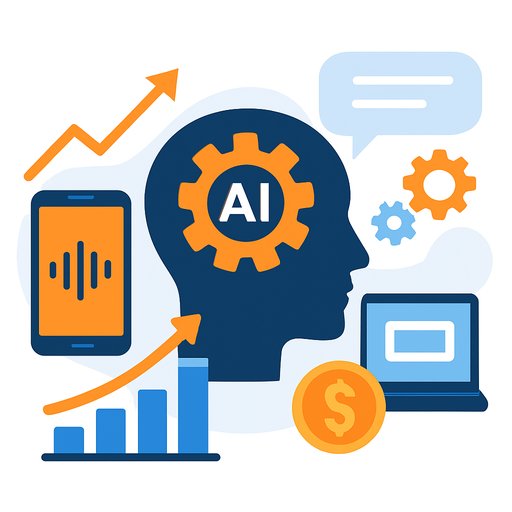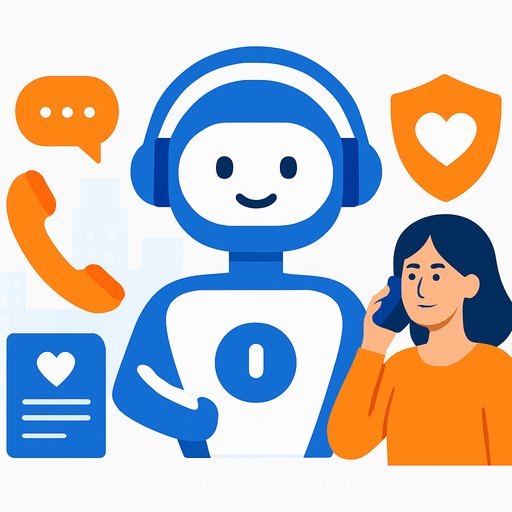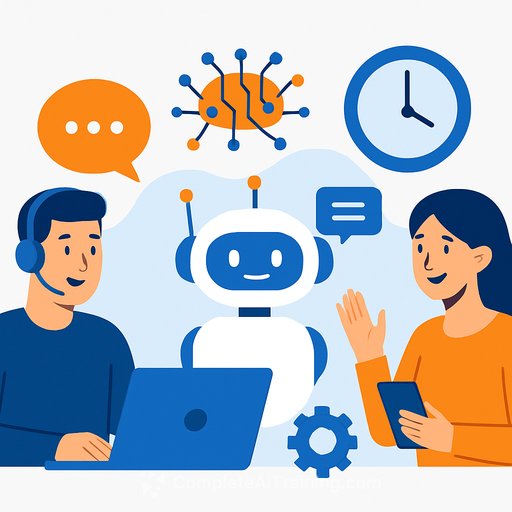SoundHound AI's Agentic Rollout with Apivia: What Contact Center Leaders Should Do Next
Apivia Courtage is rolling out SoundHound AI's agentic stack with the Amelia 7 platform across its contact centers. The goal is clear: automate complex service tasks and offer clean self-serve across multiple channels without breaking customer trust.
This is one of insurance's first enterprise-scale deployments of agentic capabilities for customer-facing operations. For customer support leaders, it's a signal that agentic AI has moved from pilot to production at serious scale.
Why this matters to customer support
Agentic systems don't stop at intent detection. They plan, decide, and act across systems to complete multi-step work, then hand off to a human when needed.
That means fewer repetitive calls for your agents, faster resolutions for customers, and a clearer path to measurable containment without destroying CSAT.
What "agentic" looks like in practice
- End-to-end flows: Policy changes, claim status, payment arrangements, appointment setting, and identity checks completed autonomously.
- Multi-channel coverage: Voice, chat, email, and messaging with consistent logic and audit trails.
- Human-in-the-loop: Escalations on ambiguity, high-risk changes, or emotional cues, with context auto-summarized for agents.
Fast path to value: a 30-60 day rollout plan
- Pick 3-5 high-intent use cases with clear rules and low legal exposure (address changes, claim status, proof-of-insurance, payment reminders, appointment reschedules).
- Define escalation rules: confidence thresholds, compliance triggers, dollar limits, and sentiment cues that push to a human.
- Connect the data: CRM, policy admin, billing, and knowledge base. Lock scopes to read/write by task, and use a sandbox first.
- Compliance guardrails: PII redaction, consent prompts for call recording, and PCI shielding on payments. See the NIST AI Risk Management Framework for governance basics here.
- Measure from day one: baseline AHT, CSAT, FCR, containment rate, deflection to self-serve, cost per contact, and QA compliance.
- Agent experience: train agents on AI-assisted workflows, set clear rules for edits/overrides, and update QA rubrics to include AI outcomes.
- Safety net: approved response templates for low-confidence moments, strict tool access, and quick fallbacks to live support.
- Weekly iteration: review call transcripts, fix edge cases, refine prompts/tools, and ship small updates often.
Suggested architecture checklist
- Voice stack: ASR/TTS with barge-in, latency under 300-500 ms for natural turns.
- LLM + planning: deterministic guardrails, tool calling, and auditable decision logs.
- Knowledge: retrieval for policy articles and forms, with source citation in every answer.
- Workflow engine: APIs into CRM, billing, policy admin, identity verification, and ticketing.
- Observability: conversation analytics, error tracking, and cost controls by use case.
Vendor selection signals this rollout reinforces
- Referenceable enterprise deployments across channels, not just pilots.
- Clear SLAs, uptime history, and multilingual support.
- Security and auditability: role-based access, redaction, and immutable logs.
- Transparent unit economics: cost per resolved interaction and GPU usage controls.
Operational KPIs to set upfront
- Containment rate by intent: 30-60% for well-scoped tasks within 90 days.
- AHT reduction for agent-assist: 10-25% vs. baseline.
- CSAT/NPS: no drop in the first 30 days; goal is +0.1 to +0.3 after 90 days.
- QA compliance: 98%+ on disclosures, authentication, and data handling.
- After-call work: 30-50% reduction via auto-summaries and dispositioning.
What this signals about SoundHound AI as a partner
The Apivia deployment supports the company's enterprise ambitions and shows viability for complex, regulated use cases. The company also reported Q2 2025 revenue of US$42.7 million, tied to larger enterprise wins.
Forecasts referenced in public narratives project US$308.5 million revenue and US$40.4 million earnings by 2028, implying 32.9% annual revenue growth and a significant swing from prior losses. One model points to a US$16.56 fair value with a 13% downside to the current price. For procurement teams, the takeaway is simple: track enterprise deal flow and the path to profitability as signals of stability.
Compliance quick hits for contact centers
- Payments over voice: route to secure IVR or agent desktop with card shielding. See PCI guidance here.
- Privacy: consent prompts, opt-outs, and retention policies aligned to your region.
- Audit: log every tool call, data write, and decision point for dispute resolution.
Quick start checklist
- Pick high-volume intents with clear rules and low risk.
- Define escalation and guardrails before go-live.
- Instrument everything and review weekly.
- Coach agents on AI collaboration and new QA standards.
- Expand only after hitting targets on the first intents.
Level up your team
If you're building AI skills across your support org, explore role-based learning paths for customer support leaders and ICs here.
Your membership also unlocks:






